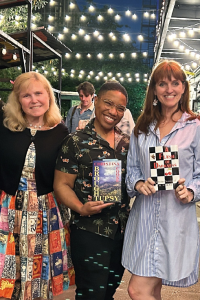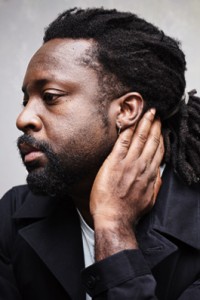From Remote Cabins to Late Night Movies: Horror in 2018 by John Langan

Novels first, then: Paul Tremblay’s The Cabin at the End of the World is the novel of 2018. With his previous two books, Disappearance at Devil’s Rock and A Head Full of Ghosts, Tremblay announced himself as among the most ambitious of his generation of horror writers, producing novels that drew on the examples of the genre’s great practitioners, King and Jackson, while blending them with a 21st- century sensibility. The result was work that could be enjoyed by an audience familiar with horror through its popular texts and appreciated by those whose knowledge of the field ran deeper. The Cabin at the End of the World cements the claims of its predecessors. It’s one of those novels which emerges as a kind of allegory for its historical moment. Acting on what they claim is divine inspiration, a quartet of strangers traps a couple and their adopted daughter in the remote cabin to which they’ve come for their summer vacation. Leonard, the strangers’ spokesperson, tells Eric, Andrew, and their daughter, Wen, that God demands a fearsome task of them: in order to avert an escalating series of disasters, the family must decide on one of them to kill as a sacrifice. Of course, the family resists the bizarre injunction, but televised reports appear to confirm the strangers’ claims. It’s possible to read the novel as a reflection of the clash of cultures that has gripped the United States during the last couple of years, though the conflict between religious extremism and cosmopolitan humanism is not new. Yet Tremblay never allows the tension to slack, and the result is a tour de force which accomplishes the rare feat of an ambiguous ending that succeeds.
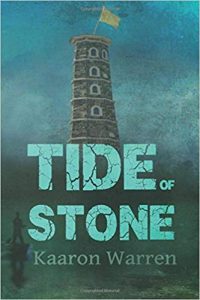 Tremblay’s book is one of a number demonstrating the vibrancy and variety of the contemporary horror novel. With The Outsider, Stephen King wrote a narrative as gripping as any he has ever produced, a white-knuckle ride in which all his considerable gifts as a storyteller are on display. Gabino Iglesias’s Coyote Songs is a novel of borders, set at the intersection of horror and noir, bound together by prose as glittering and sharp as broken glass. Kaaron Warren’s Tide of Stone is a formally inventive account of a unique prison whose foundation conceals a terrible secret; somewhat in the same manner as Tremblay’s novel, it emerges as a kind of fable of the contemporary obsession with the punishment of criminals. Unlanguage, Michael Cisco’s latest novel, combines workbook exercises in its eponymous (un)tongue with descriptions of its effect; the result is among his most directly horrific novels. John Hornor Jacobs’s The Sea Dreams It Is the Sky is a lyrically written story of its narrator’s friendship with a famous poet in exile from a fictitious South American country (whose repressive, US-backed government has too many historical analogues), and what happens when the narrator attempts to follow the poet back home.
Tremblay’s book is one of a number demonstrating the vibrancy and variety of the contemporary horror novel. With The Outsider, Stephen King wrote a narrative as gripping as any he has ever produced, a white-knuckle ride in which all his considerable gifts as a storyteller are on display. Gabino Iglesias’s Coyote Songs is a novel of borders, set at the intersection of horror and noir, bound together by prose as glittering and sharp as broken glass. Kaaron Warren’s Tide of Stone is a formally inventive account of a unique prison whose foundation conceals a terrible secret; somewhat in the same manner as Tremblay’s novel, it emerges as a kind of fable of the contemporary obsession with the punishment of criminals. Unlanguage, Michael Cisco’s latest novel, combines workbook exercises in its eponymous (un)tongue with descriptions of its effect; the result is among his most directly horrific novels. John Hornor Jacobs’s The Sea Dreams It Is the Sky is a lyrically written story of its narrator’s friendship with a famous poet in exile from a fictitious South American country (whose repressive, US-backed government has too many historical analogues), and what happens when the narrator attempts to follow the poet back home.
2018 also saw the completion of a pair of trilogies. Ramsey Campbell’s The Way of the Worm concluded the narrative that had begun with The Searching Dead and continued through Born to the Dark, the three books comprising a sequence Campbell christened The Three Births of Daoloth. A return to and a revisioning of some of his earliest imaginings, the trilogy is a kind of autobiography of its protagonist, in which his lifelong struggle with a supernatural agency occurs against the backdrop of post-war British history. The result is a magisterial work, though such a description scants the novels’ propulsive readability. It’s another remarkable achievement in a career full of them. Glen Hirshberg’s Nothing to Devour brought his trilogy of vampire novels to a climactic and heartbreaking finale. Gathered in a house on an island off the coast of Washington state, the survivors of the previous novel, Good Girls, struggle to reckon with the trauma of their previous encounters with the monsters, even as the most formidable vampire of them all is making her slow way to them. The narrative deftly shifts among multiple perspectives, all the while hurtling toward a climactic sequence that is surprising and satisfying. Throughout this series, Hirshberg has gambled big, and those gambles have continued to pay off. The result is nothing less than inspiring.
As ever, this year saw several striking debuts. Zoje Stage’s Baby Teeth was wonderfully disturbing. Gwendolyn Kiste’s The Rust Maidens was a significant addition to what is already a substantial body of work. And T.E. Grau’s I Am the River told the story of a surreal, secret moment in the Vietnam war just bizarre enough to have the ring of truth.
In terms of short story collections, 2018 offered a plenitude to choose from. In a very strong group, Gemma Files’s Spectral Evidence is the collection of the year. Bringing together a selection of her more recent work, the book showcased the fecundity of Files’s imagination; indeed, her prodigious inventiveness recalls no one so much as Clive Barker. Dense and compelling, her prose brings us inside the perspectives of damaged characters intelligent enough to recognize the shape of their wounds, if not always the means to heal them. Files’s stories live in the margins between worlds figurative and literal and draw their strength from the problems and possibilities of such places. Released later in the year, a second collection, Drawn Up From Deep Places, assembled more stories, including two sets of story sequences, and served as a kind of adjunct to Spectral Evidence. A third collection is forthcoming from Cemetery Dance and cannot arrive soon enough.
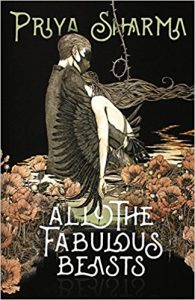 Of the other collections that appeared this year, Glen Hirshberg’s The Ones Who Are Waving was a standout, a reminder of his achievements writing what Ramsey Campbell has called the humanist horror story. In lucid, elegant prose, Hirshberg’s stories range from contemporary Russia to the American Midwest, bringing his characters face to face with the legacies of past actions, in some cases their own, in others those of people they have never met. Damien Angelica Walters’s second collection, Cry Your Way Home, featured an impressive assortment of stories first published in venues from Nightmare magazine to The Madness of Dr. Caligari. One of the consistently best writers to emerge these past few years, Walters reads like a combination of Angela Carter and Joyce Carol Oates, and her work is not to be missed. Anya Martin’s Sleeping with the Monster was a strong debut whose best stories told the secret histories of figures including Elsa Lanchester and Andy Warhol. Priya Sharma’s All the Fabulous Beasts was the year’s other noteworthy premier, a collection of gracefully written stories in which the conjunction of the human and the animal lay at its beating heart. A pair of retrospective collections, DJStories and Figures Unseen, surveyed and sampled the careers of David J. Schow and Steve Rasnic Tem, respectively; the result is a pair of outstanding introductions to two of the field’s most accomplished and enduring stylists.
Of the other collections that appeared this year, Glen Hirshberg’s The Ones Who Are Waving was a standout, a reminder of his achievements writing what Ramsey Campbell has called the humanist horror story. In lucid, elegant prose, Hirshberg’s stories range from contemporary Russia to the American Midwest, bringing his characters face to face with the legacies of past actions, in some cases their own, in others those of people they have never met. Damien Angelica Walters’s second collection, Cry Your Way Home, featured an impressive assortment of stories first published in venues from Nightmare magazine to The Madness of Dr. Caligari. One of the consistently best writers to emerge these past few years, Walters reads like a combination of Angela Carter and Joyce Carol Oates, and her work is not to be missed. Anya Martin’s Sleeping with the Monster was a strong debut whose best stories told the secret histories of figures including Elsa Lanchester and Andy Warhol. Priya Sharma’s All the Fabulous Beasts was the year’s other noteworthy premier, a collection of gracefully written stories in which the conjunction of the human and the animal lay at its beating heart. A pair of retrospective collections, DJStories and Figures Unseen, surveyed and sampled the careers of David J. Schow and Steve Rasnic Tem, respectively; the result is a pair of outstanding introductions to two of the field’s most accomplished and enduring stylists.
2018’s major anthologies saw a drop in Lovecraft-Cthulhu Mythos-themed books. Ellen Datlow’s The Devil and the Deep is the anthology of the year; although it had fierce competition from Mark Morris’s New Fears 2. (In the interest of full disclosure, I should note that I had stories in both anthologies.) What distinguishes Datlow and Morris’s anthologies is not only the overall excellence of their contents, but their variety. This is perhaps not as surprising in the case of New Fears 2, which is unthemed, but The Devil and the Deep, as its subtitle indicates, concerns “Horror Stories of the Sea.” Yet the writers Datlow assembled find a multitude of ways to engage the book’s theme, with the result that The Devil and the Deep avoids the underlying monotony that is the threat of a themed anthology.
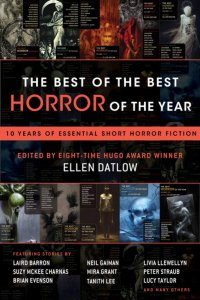 One of the mainstays of the genre, the small press produced three of the year’s other noteworthy anthologies: Max Booth III & Lori Michelle’s Lost Films, C.M. Muller’s Nightscript IV, and Linda Rucker’s Uncertainties Vol. III. It’s not usually my practice to address Year’s Best anthologies, but for Ellen Datlow’s The Best of the Best Horror of the Year, this seems a custom best honored in the breach. Datlow’s survey of the first decade of her Best Horror of the Year series is also an argument about the field’s major talents and trends. Its contents make a compelling case for the robustness of the field, a condition Datlow herself has done much to nourish. (Again, in the interest of full disclosure, this volume contains one of my stories as well.)
One of the mainstays of the genre, the small press produced three of the year’s other noteworthy anthologies: Max Booth III & Lori Michelle’s Lost Films, C.M. Muller’s Nightscript IV, and Linda Rucker’s Uncertainties Vol. III. It’s not usually my practice to address Year’s Best anthologies, but for Ellen Datlow’s The Best of the Best Horror of the Year, this seems a custom best honored in the breach. Datlow’s survey of the first decade of her Best Horror of the Year series is also an argument about the field’s major talents and trends. Its contents make a compelling case for the robustness of the field, a condition Datlow herself has done much to nourish. (Again, in the interest of full disclosure, this volume contains one of my stories as well.)
In terms of non-fiction, 2018 featured what has become the usual eclectic mix of books. Scott Poole’s Wasteland: The Great War and the Origins of Modern Horror traced imagery and concerns of artists including writers H.P. Lovecraft and Arthur Machen and filmmakers Fritz Lang and James Whale. The second volume in Eric Guignard’s Exploring Dark Short Fiction series addressed Kaaron Warren’s work, featuring a selection of her stories, critical essays on them, and a fine interview with her. At the very end of the year, Guignard released a third entry dealing with Nisi Shawl’s fiction, and announced that a fourth volume, its subject Jeffrey Ford, is scheduled for 2019. Although my concern is principally with book publishing, I would be remiss in not mentioning Vastarien, an excellent new journal whose contents, fiction, and non-, are oriented toward Thomas Ligotti and work in his vein. Under the capable editorial hands of Matt Cardin & Jon Padgett, three issues appeared in 2018; all are worth a read. Finally, PS Publishing added new titles to their Midnight Movie Monographs: John Connolly writing on Horror Express, Tim Lucas on Spirits of the Dead, and Tim Major on Les Vampires. Bringing together a mix of fiction writers and critics to consider horror films ranging from the early years of cinema to more recent fare, the series has been interesting and entertaining; happily, more entries are on the way.
John Langan is the author of two novels, The Fisherman (2016) and House of Windows (Night Shade 2009), and two collections of stories, The Wide Carnivorous Sky and Other Monstrous Geographies (2013) and Mr. Gaunt and Other Uneasy Encounters (2008). With Paul Tremblay, he co-edited Creatures: Thirty Years of Monsters (2011). One of the founders of the Shirley Jackson Awards, he served as a juror for its first three years. He lives in New York’s Mid-Hudson Valley with his wife and younger son.
This and more like it in the February 2019 issue of Locus.
 While you are here, please take a moment to support Locus with a one-time or recurring donation. We rely on reader donations to keep the magazine and site going, and would like to keep the site paywall free, but WE NEED YOUR FINANCIAL SUPPORT to continue quality coverage of the science fiction and fantasy field.
While you are here, please take a moment to support Locus with a one-time or recurring donation. We rely on reader donations to keep the magazine and site going, and would like to keep the site paywall free, but WE NEED YOUR FINANCIAL SUPPORT to continue quality coverage of the science fiction and fantasy field.





